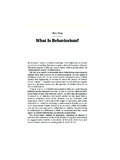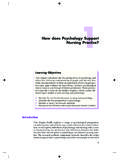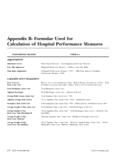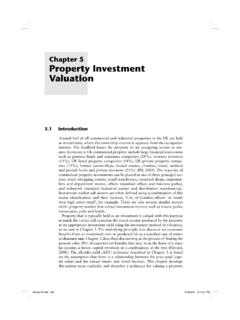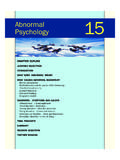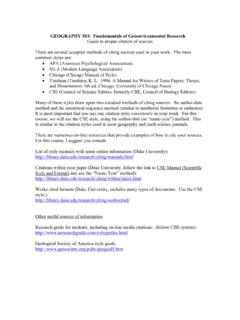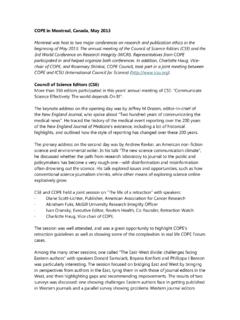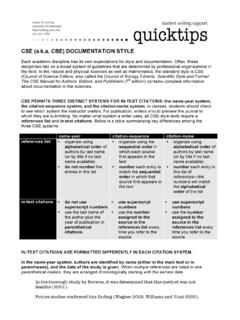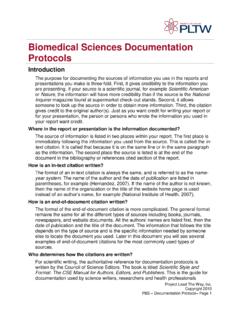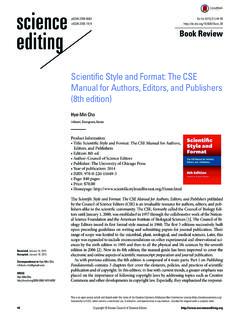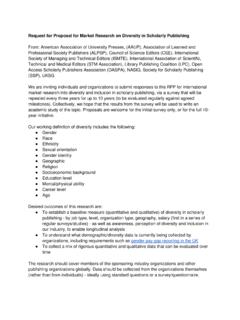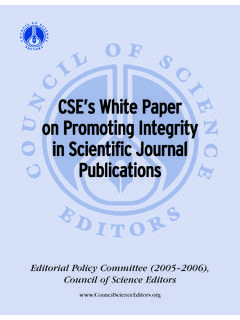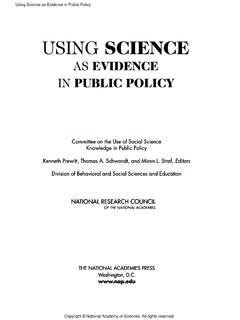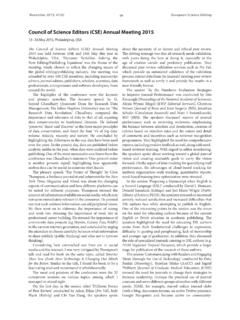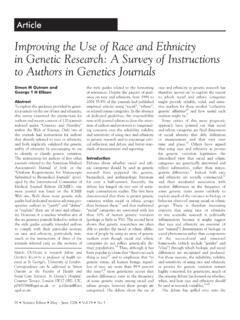Transcription of Style Guide and Acceptable Abbreviations for ACNM and JMWH
1 Editorial Policies 3rd edition, 2012 Table of Contents Introduction .. 1 Policy on Authorship .. 2 Policy on Conflict of Interest .. 3 Policy on Duplicate 5 Policy on Plagiarism .. 8 Policy on Protection of Research Participants and 10 Policy on Publication of Public Health Program Evaluations .. 12 Policy on Publication of Survey Research with ACNM Members as Participants .. 14 1 INTRODUCTION Authors, peer reviewers, and editors must follow an ethical process when conducting research, writing manuscripts, and reviewing submissions to ensure the integrity of every published manuscript. The following policies have been adopted by the Journal of Midwifery & Women s Health (JMWH) in concert with recommendations from the International Committee of Medical Editors (ICMJE),1 World Association of Medical Editors (WAME),2 AMA Manual of Style ,3 Committee on Publication Ethics (COPE),4 and council of Science More in-depth discussion of ethical considerations for authors, peer reviewers, and editors can be found in the references listed.
2 References 1. International Committee of Medical Journal Editors. Uniform Requirements for Manuscripts Submitted to Biomedical Journals. Updated April 2010. Accessed July 24, 2010. 2. World Association of Medical Editors Web Site. Accessed July 25, 2010. 3. Iverson C, Christiansen S, Flanagin A, et al. AMA Manual of Style : A Guide for Authors and Editors. 10th ed. New York, NY: Oxford University Press; 2007. 4. Committee on Publication Ethics Web Site. Accessed July 25, 2010. 5. council of Science Editors Web Site. Accessed July 25, 2010. 2 POLICY ON AUTHORSHIP An author is someone who has made substantive intellectual contributions to a The Journal of Midwifery & Women s Health (JMWH) authorship requirements are in accordance with the International Committee of Medical Editors (ICMJE) Uniform Requirements for Manuscripts Submitted to Biomedical Individuals must meet all 3 of the following conditions to be included as an author: 1. substantial contributions to conception and design, acquisition of data, or analysis and interpretation of data (for a manuscript that does not involve data analysis, substantial contributions include conceptualization of the manuscript, review of the literature, or synthesis of the literature); 2.
3 Drafting the article or revising it critically for important intellectual content; and 3. final approval of the submitted manuscript and the version to be Individuals who contributed to the manuscript but do not meet all 3 of these criteria should be listed in the acknowledgements section but cannot be an author. Each author should have participated sufficiently in the work to take public responsibility for appropriate portions of the All persons designated as authors should qualify for authorship, and all those who qualify should be Each author must sign an author disclosure form indicating she or he qualifies for authorship before submissions will be accepted for review. The order of authorship on the byline should be a joint decision of the co-authors, and the corresponding author must be prepared to explain the Generally authors are listed in descending order according to their levels of contribution. However, some groups choose to list the most senior author last, irrespective of the amount of his or her contribution, and other groups may choose alphabetical order when all authors have contributed Authors should make decisions about the order of authorship as early as possible, ideally before the manuscript is Changes in authorship (order, additions, and deletion of authors) during manuscript review, revision, or acceptance must be accompanied by a written request and explanation from all of the original References 1.
4 International Committee of Medical Journal Editors. Uniform Requirements for Manuscripts Submitted to Biomedical Journals. Updated April 2010. Accessed July 24, 2010. 2. World Association of Medical Editors (WAME) Editorial Policy Committee. Authorship Policy Statement. #authorship. Updated January 2007. Accessed July 24, 2010. 3. Iverson C, Christiansen S, Flanagin A, Fontanarosa PB, Glass RM, Gregoline B, Lurie SJ, Meyer HS, Winker MA, Young RK. AMA Manual of Style : A Guide for Authors and Editors. 10th ed. New York, NY: Oxford University Press; 2007. Approved by the JMWH Editorial Board: December 5, 2005 Revised: October 14, 2010 3 POLICY ON CONFLICT OF INTEREST Definitions A conflict of interest refers to a conflict between the private interests and official responsibilities of a person in a position of Conflicts of interest may be actual, potential, or perceived. Conflicts of interest occur in publishing, where an author, reviewer, or editor may have competing interests that could lead to biased information being presented in, or biased decisions made about, a manuscript.
5 Actual conflicts of interest are difficult to determine, and there may be disagreement as to whether they exist. Potential conflicts of interest, or the perception of conflicts of interest, can often be identified and are important to address, regardless of the individual s belief that such perceived conflict would not affect his or her judgment. Having a competing interest does not equal wrongdoing, but all involved should be comfortable that the publication is unbiased and the process transparent. Financial Conflicts exist when the author, reviewer, or editor might benefit financially from, or has benefited in the past from, a commercial or educational product being reviewed, evaluated, or recommended in a manuscript. Examples include being a shareholder in, employed by, or receiving consultant or speaking fees from, the company that produces the product. Current financial interests and financial interests within the past 3 years are considered potential conflicts.
6 Financial support for publications must be acknowledged in the manuscript. Any agreement with the funder that limits an investigator s access to data, ability to collect or conduct analyses of data, or freedom to publish without approval of the funder must be identified when the manuscript is submitted. The editor will decide whether any pertinent information should be included if the manuscript is published. Non-financial Conflicts can include political, academic, intellectual, professional, or other relationships or activities that prevent an unbiased presentation of material, review of a manuscript, or decision to publish an article. Personal or professional relationships or beliefs may create a conflict. For example, an editor with strong personal beliefs about abortion might not be willing to consider a manuscript that covers the management of medication abortion. An editor or reviewer may have strong professional beliefs that there is only one way to manage a controversial clinical issue, and thus might not be able to be objective and systematic in reviewing a manuscript on that topic.
7 A reviewer who recognizes the author of a manuscript as the head of the department where the reviewer is applying for a position may not be able to provide an objective critical review of the manuscript. Unpaid Decision-making Positions such as membership on the board of directors of an organization or being a peer reviewer for several journals set the stage for potential conflicts but may or may not create a conflict of interest, depending on whether or not decisions about manuscripts are affected by perceived needs of the competing organization or journal. Disclosure Disclosure maintains confidence in the integrity of the system. Disclosure allows editors to estimate the extent of any potential conflict of interest before making a decision about the manuscript. Author disclosure of a potential conflict of interest does not necessarily mean a 4 manuscript will be rejected for publication; rather, disclosure offers readers the opportunity to make a decision about possible bias in the published article.
8 Disclosure applies to all types of articles: original research, review articles, editorials, commentaries, and columns. Authors should disclose any actual or potential financial conflicts of interest when submitting a manuscript for consideration. If there are no conflicts, this too should be explicitly stated by the authors. The Journal of Midwifery & Women s Health (JMWH) requires authors to do so in the author disclosure form that is submitted with a manuscript. This information will be published with the manuscript, should it be positively reviewed and accepted for publication. Reviewers should disclose any financial or other issues (eg, philosophical beliefs, professional competition) to the editor as soon as they recognize the potential for a conflict. A perceived conflict does not mean there is an actual problem. A conflict exists only if it would limit the reviewer s ability to give a fair and impartial review. It is also important to remember that until published, a manuscript is the confidential property of the author.
9 Therefore, reviewers cannot use, cite, or discuss the content of unpublished manuscripts in any personal or professional activities, or use the content for financial gain. Editors will disqualify themselves from a decision-making role on a manuscript if there is a potential conflict of interest for financial, professional, personal, or other reasons. For example, an editor may request that another editor read the reviews and make a decision on a manuscript submitted by a close colleague. It is also important to remember that until published, a manuscript is the confidential property of the author. Therefore, editors cannot use, cite, or discuss the content of unpublished manuscripts in any personal or professional activities, or use the content for financial gain. Undisclosed conflicts are sometimes identified during the review process. If the reviewer or editor identifies a potential conflict on the part of the author, the manuscript will be returned with a request that the author describe how the concern is or is not a conflict of interest.
10 If the conflict is on the part of a reviewer, the manuscript will be re-assigned to another reviewer. Undisclosed financial conflicts are sometimes identified after publication. In this case, JMWH will publish a Notice of Failure to Disclose Financial Interest. Reference 1. Conflict of interest. Merriam-Webster s online dictionary. Accessed July 20, 2010. Approved by the JMWH Editorial Board: December 5, 2005 Revised: October 14, 2010 5 POLICY ON DUPLICATE PUBLICATION Duplication publication is the simultaneous or subsequent reporting of essentially the same information, article, or major components of an article 2 or more times in one or more forms of media (either print or electronic format). 1 Duplicate publication is also called redundant or overlapping publication and is a form of self-plagiarism. Submissions that contain information that has already been reported in large part in a published article or is contained in another manuscript that has been submitted or accepted for publication elsewhere, in print or in electronic media, will not be accepted for publication in the Journal of Midwifery & Women s Health (JMWH).

